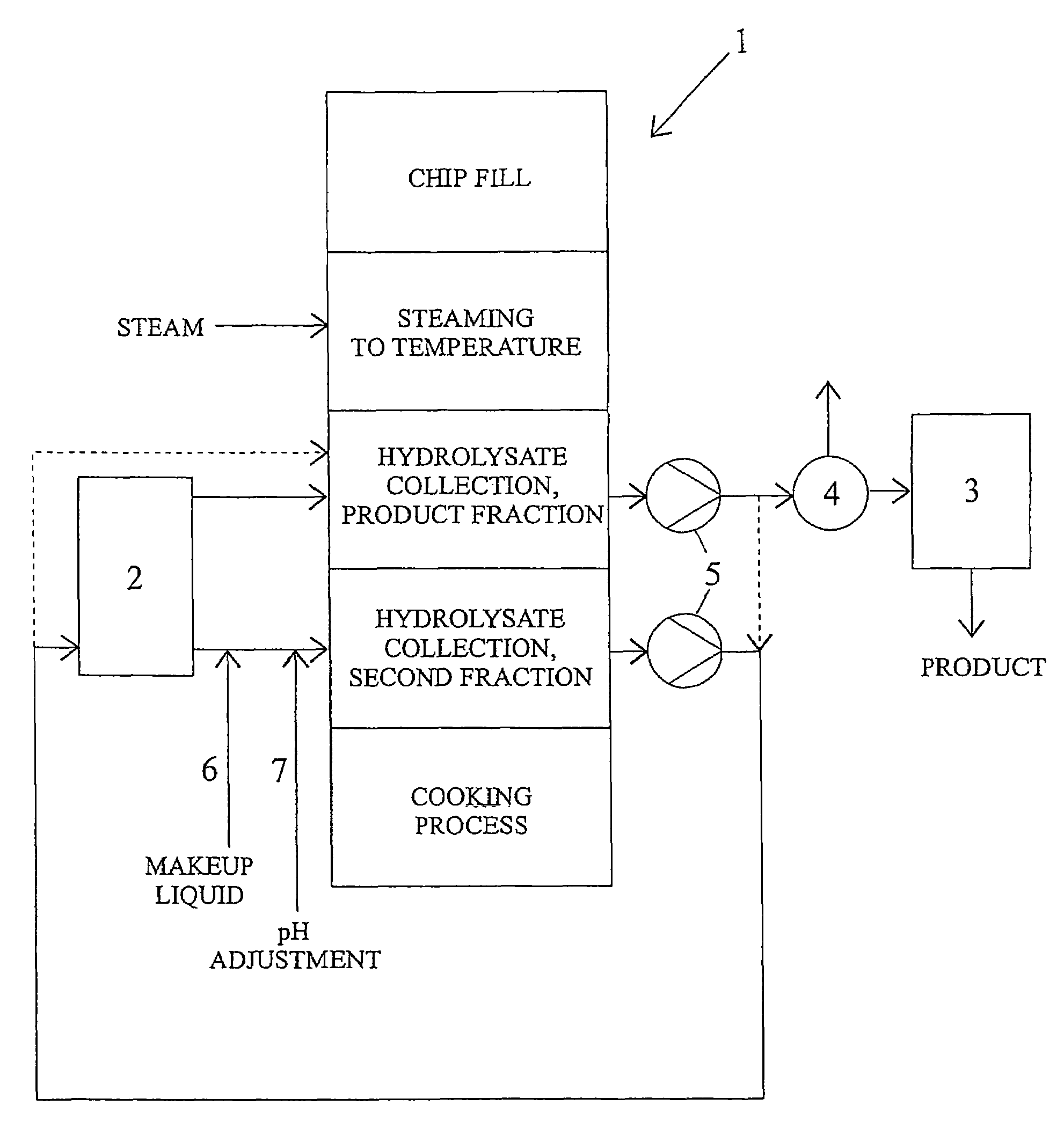Method for recovering hydrolysis products
a hydrolysis product and product technology, applied in the field of hydrolysis products recovery, to achieve the effect of increasing product concentration and saving energy
- Summary
- Abstract
- Description
- Claims
- Application Information
AI Technical Summary
Benefits of technology
Problems solved by technology
Method used
Image
Examples
Embodiment Construction
[0011]In FIG. 1, a process according to the invention is shown, a batch digester and the process stages taking place therein being schematically represented as 1. The chronological stages are presented from the top down, and the various streams entering and leaving the digester are shown in relation to each chronological stage by arrows. After the digester has been filled with lignocellulosic material (here referred to as “chips”, although the material may be any lignocellulosic material suitable for prehydrolysis), the process begins with steaming. During this stage, acids from the lignocellulosic material are liberated, lowering the pH significantly without the addition of external chemicals. Hydrolysis of carbohydrates commences, but no significant liquid phase is necessarily formed in the lower part of the digester. The digester and chip temperature at the end of this stage (i.e. the prehydrolysis reaction temperature) may be in the range 150-180° C.; preferably, the chip temper...
PUM
| Property | Measurement | Unit |
|---|---|---|
| temperature | aaaaa | aaaaa |
| temperature | aaaaa | aaaaa |
| temperature | aaaaa | aaaaa |
Abstract
Description
Claims
Application Information
 Login to View More
Login to View More - R&D
- Intellectual Property
- Life Sciences
- Materials
- Tech Scout
- Unparalleled Data Quality
- Higher Quality Content
- 60% Fewer Hallucinations
Browse by: Latest US Patents, China's latest patents, Technical Efficacy Thesaurus, Application Domain, Technology Topic, Popular Technical Reports.
© 2025 PatSnap. All rights reserved.Legal|Privacy policy|Modern Slavery Act Transparency Statement|Sitemap|About US| Contact US: help@patsnap.com


